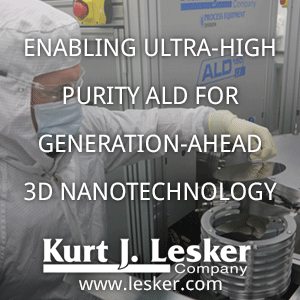3D vertical ferroelectric capacitors are revolutionizing memory technology, offering higher density and performance by leveraging vertical structures to overcome planar scaling limits. Using aluminum-doped hafnium oxide (Al:HfO₂), these capacitors achieve stable remnant charge, low voltage operation, and enhanced scalability, addressing advanced applications in AI and edge computing. Recent innovations, such as the TiN/Al:HfO₂/TiN configuration introduced by Dongguk University, South Korea, demonstrate improvements in endurance and integration. This progress builds on foundational work by Qimonda and Fraunhofer IPMS-CNT in Dresden Germany, including Tim Böscke's pioneering discovery of ferroelectricity in hafnium oxide and Johannes Müller's ALD advancements using ALD process developments FHR and ASM tools. These developments cement Al:HfO₂ as a DRAM and CMOS-compatible solution for next-generation non-volatile memory technologies.
A recent study, 3D Vertical Ferroelectric Capacitors with Excellent Scalability (by Eunjin Lim et al Dongguk University, South Korea)), introduces a 3D vertical ferroelectric capacitor with a TiN/Al:HfO₂/TiN configuration. It employs a unique architecture with multiple small holes sharing a common pillar electrode, enhancing ferroelectric properties and scalability. Analyses using advanced microscopy confirm its structural integrity, while the device demonstrates high endurance, minimal variability, and excellent retention. This architecture also supports integration into one-transistor n-capacitor ferroelectric memory with vertical transistors.
Importantly, Earlier work by Fraunhofer IPMS-CNT, including the 2012 study Incipient Ferroelectricity in Al-Doped HfO₂ Thin Films, first demonstrated ferroelectric properties in HfO₂ thin films doped with aluminum. This research identified an antiferroelectric-to-ferroelectric phase transition, influenced by Al concentration and annealing conditions, and attributed ferroelectricity to a non-centrosymmetric orthorhombic phase (Pbc2₁). This foundational work highlighted the potential of Al:HfO₂ for applications in memory and sensing technologies.
The later paper High Endurance Strategies for Hafnium Oxide-Based Ferroelectric Field Effect Transistors further emphasized Al:HfO₂’s scalability and compatibility with CMOS technology. It explored strategies to improve endurance and reduce interfacial stress, including modifying interfacial materials and exploring MFS structures. These strategies balance performance, reliability, and scalability, supporting the broader adoption of ferroelectric memory.
In Johannes Müller's PhD thesis (2014, Fraunhofer IPMS-CNT), the Atomic Layer Deposition (ALD) processes for hafnium oxide (HfO₂) and aluminum-doped hafnium oxide (Al:HfO₂) utilized advanced deposition equipment to achieve precise doping and phase control. The processes were performed using a 300 mm FHR ALD 300 and an ASM PULSAR 3000®, both of which are designed for high-uniformity deposition on large substrates, such as 300 mm wafers. These tools facilitated the use of tetrakis(ethylmethylamino)hafnium (TEMAHf) and trimethylaluminum (TMA) as precursors for hafnium and aluminum, respectively, along with oxidants like water or ozone. By tailoring precursor ratios, deposition temperatures, and annealing conditions, the processes ensured the stabilization of the orthorhombic Pbc2₁ phase, critical for the ferroelectric properties of Al:HfO₂ films. These advancements highlight the scalability and compatibility of ALD-fabricated Al:HfO₂ films with CMOS technology.
The patent US 2009/0057737 A1, authored by Tim Böscke et al., describes a method for fabricating integrated circuits with a dielectric layer that exhibits enhanced properties, such as high dielectric constants and ferroelectricity. The process involves forming a preliminary dielectric layer, such as hafnium oxide or doped hafnium oxide (e.g., aluminum- or silicon-doped), using techniques like Atomic Layer Deposition (ALD). The dielectric layer is initially amorphous and undergoes a phase transition to a crystalline state upon heating above its crystallization temperature. The method includes precise doping of the dielectric layer to stabilize desirable phases, such as orthorhombic or tetragonal, which are essential for achieving ferroelectricity. A covering layer, often a conductive electrode material, is deposited before annealing to assist in crystallization and enhance material properties. The innovations outlined aim to improve memory applications, such as capacitors and transistors, by offering higher storage densities, lower leakage currents, and compatibility with advanced CMOS processes. This patent is foundational in the development of ferroelectric hafnium oxide-based technologies.
Sources:
- 3D Vertical Ferroelectric Capacitors with Excellent Scalability: 3D Vertical Ferroelectric Capacitors with Excellent Scalability | Nano Letters
- Mueller, S., et al., Incipient Ferroelectricity in Al‐Doped HfO₂ Thin Films, Advanced Functional Materials, 2012. Wiley Online Library
- High Endurance Strategies for Hafnium Oxide-Based Ferroelectric Field Effect Transistor, Fraunhofer IPMS, 2016. (N-432037.pdf): N-432037.pdf
Ferroelektrizität in Hafniumdioxid und deren Anwendung in nicht-flüchtigen Halbleiterspeichern Ferroelektrizität in Hafniumdioxid und deren Anwendung in nicht-flüchtigen Halbleiterspeichern - US 2009/0057737A1 (prev. QIMONDA AG, now NAMLAB GGMBH) https://patentimages.storage.googleapis.com/56/02/b2/d476f4848ffe82/US20090057737A1.pdf



%20(1).png)





No comments:
Post a Comment